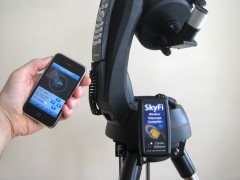Inauthenticity
 Author Catherynne M. Valente has just finished reading Yellow Blue Tibia by Adam Roberts, and she’s pissed off. “[L]iterally every cultural note in this entire novel is wrong,” she writes (her emphasis), and goes on to explain why, in telling and damning detail. Roberts, she argues, gets everything about Russia, Russians and Russian culture wrong (“the book would have been a lot more believable with all the names changed and set in England or America”). And, to top it all off, he gets a lot about the 1980s wrong, too: “One of the characters, Saltykov, has Asperger’s Syndrome. In 1986. Asperger’s was not diagnosed by that name in anyone until 1992. … Scientology and Asperger’s and alcoholism and the evils of tobacco are concerns of today, not of 1986.” Even the novel’s title, which is claimed to be a phonetic representation of saying “I love you” — that’s wrong, too.
Author Catherynne M. Valente has just finished reading Yellow Blue Tibia by Adam Roberts, and she’s pissed off. “[L]iterally every cultural note in this entire novel is wrong,” she writes (her emphasis), and goes on to explain why, in telling and damning detail. Roberts, she argues, gets everything about Russia, Russians and Russian culture wrong (“the book would have been a lot more believable with all the names changed and set in England or America”). And, to top it all off, he gets a lot about the 1980s wrong, too: “One of the characters, Saltykov, has Asperger’s Syndrome. In 1986. Asperger’s was not diagnosed by that name in anyone until 1992. … Scientology and Asperger’s and alcoholism and the evils of tobacco are concerns of today, not of 1986.” Even the novel’s title, which is claimed to be a phonetic representation of saying “I love you” — that’s wrong, too.
It’s annoying for a reader who knows something about the subject matter to come across a work that is so egregiously wrong about it. It’s why writers worth their salt do their research. They have to, because there are too many people out there who can and will fact-check their lazy asses and call them out on it. Valente, a writer very much worth her salt, definitely does her research, and has been doing her research vis-à-vis Russia, and it’s obvious that she’s annoyed that another writer doesn’t seem to think it matters.

 Enter Carina Software’s
Enter Carina Software’s 

